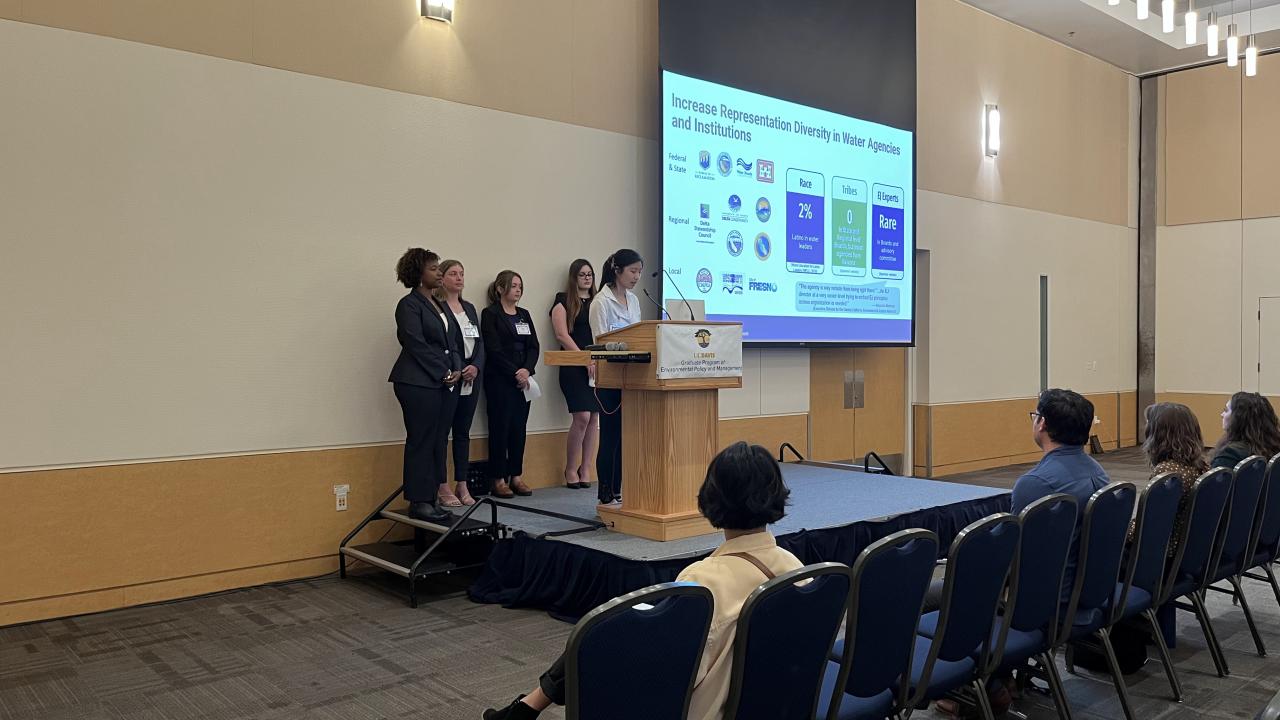
Delta Water and Where to Find It: Water Injustice in California's San Joaquin Valley
Quick Summary
- A lack of clean, drinkable water was a problem society faced before modern water treatment and transportation systems, so why do some San Joaquin Valley residents still lack access to safe drinking water?
This blog is the sixth in a series of seven, where Environmental Policy and Management students write about the capstone projects they have worked on since January in partnership with external organizations. We want to acknowledge and thank our client, Dan Constable and Annie Merritt with the Delta Stewardship Council.
More than two-thirds of California’s failing water systems are located in low-income, disadvantaged communities that primarily exist within the San Joaquin Valley, south of the Sacramento-San Joaquin Delta. This project focuses on the water justice issues that affect communities reliant on Delta surface water exports.
Between California’s 500-mile coastline and scenic mountain ranges lies the Sacramento-San Joaquin Delta (Delta), California’s largest estuary. The Delta supplies drinking water to 30 million residents and is the center of the state’s water conveyance systems that carry water from northern regions of California towards the more arid, southern regions of the state. Despite this approximately one million Californians lack access to clean drinking water. Our research explores this disconnect to find out how communities south of the Delta experience water justice issues related to Delta water exports.
In 2009, the Delta Reform Act created the Delta Stewardship Council, a California state agency charged with furthering the goals of water supply reliability and ecosystem health the Delta ecosystem and ensuring a dependable water supply for the state. The Council maintains the Delta Plan to guide local, state, and federal agencies in managing Delta resources. The 2019 five-year review of the Delta Plan called for the development of an EJ issue paper to explore how the Delta Plan can better address environmental justice. Our project aims to supplement research within the Council’s in-progress EJ issue paper by focusing on EJ issues experienced in communities south of the Delta.
The scope for this project includes research into the historical background of the Delta and water exports, an examination of EJ work across water management institutions, and a quantitative analysis with a direct focus on case study communities. We investigate issues through the lens of California’s Human Right to Water (HRTW) which seeks to ensure that every person in the state has the right to safe, clean, affordable, and accessible water. Recognizing that the communities facing the most pervasive water justice issues across the San Joaquin Valley did not create the social and environmental conditions driving them, our recommendations focus on how to better understand and quantify impacts to these communities.
The quantitative component of our project uses data from water management plans for water districts south of the Delta to investigate their reliance on Delta water exports and to narrow in on water justice issues at a community level. We found that much of the Delta water exported for agriculture bypasses the needs of nearby communities served by contaminated water systems, but that supplying these communities with clean Delta water for just one year would only represent 0.7% of the total water supply of nearby agricultural districts. Our case study analysis shows that the delivery of Delta water exports can directly and indirectly affect water justice issues of quality, affordability, and accessibility.
Climate change and drought will continue to impact California’s water supply. San Joaquin Valley communities will likely experience increasing burdens due to water shortages and limited clean groundwater supply. Focused research is needed about Delta-related EJ impacts on these communities so that policy makers can make informed decisions about water justice issues in the San Joaquin Valley.
